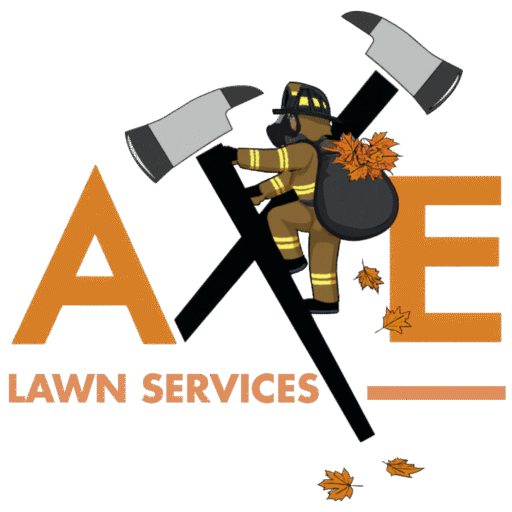Houston heat is can be downright brutal. After a summer full of blazing temps, wild rainstorms, and long stretches of drought, your lawn is probably feeling a little rough around the edges. But don’t park the mower and call it quits just yet—this in-between season is actually the perfect time to get your grass back on track.
With a little care now, you can help your lawn recover from the summer stress and gear up for a healthy fall and an even better spring. And if that sounds like a lot of work? Don’t worry—Axe Lawn Services has your back.
Don’t Stop Mowing—Just Mow Smarter
A lot of homeowners assume they can slack on mowing once August wraps up, but your grass still needs some attention.
Keep mowing weekly, but raise your mower blade a notch or two. Taller grass helps shade the soil, holds moisture better, and builds stronger roots before winter. Stick to the one-third rule—only cut off the top third of the blade at a time.
If you’re already seeing leaves fall, no problem. Mow over them and mulch them right into the soil. It feeds your lawn naturally without you having to rake.
Water Just Enough (But Not Too Much)
Fall usually brings a little more rain, which helps, but you shouldn’t shut off your sprinklers just yet. Your lawn still needs about an inch of water each week while it’s actively growing.
Keep watering deeply and infrequently. That means soaking the soil so the roots grow down—not just watering the surface. Overwatering now can encourage fungal issues or wash away newly applied fertilizer.
If it’s been a dry stretch and your grass is looking thirsty, go ahead and give it a deep drink. But if there’s been plenty of rain, ease off and let nature do its thing.
Aerate the Soil to Help Your Lawn Breathe
After months of foot traffic, sun, and heavy clay soil, your lawn might be gasping for air. Aeration is one of the most underrated things you can do for your yard.
By removing small plugs of soil, you create little openings that let water, nutrients, and oxygen reach the roots where it matters most. It also reduces compaction and improves drainage—two big problems in Houston lawns.
If your yard feels hard or water is running off instead of soaking in, it’s probably time to aerate.
Seed Those Bare or Thin Spots
See any patchy or worn-out areas? Fall is a great time to do a little overseeding. The temperatures are cooler, the soil stays moist longer, and new grass has time to establish roots before winter.
Start by raking or loosening the soil in those bare areas. Sprinkle your seed—ideally a blend that works well with warm-season grasses like Bermuda or St. Augustine—and keep it watered. Not soaked, just consistently damp until the new grass sprouts.
The earlier you do this, the more success you’ll have.
Fertilize for Root Strength
Here’s the deal: fall fertilizer isn’t about making your lawn green today—it’s about giving the roots what they need to power through winter and explode in spring.
Use a slow-release fertilizer with a lower nitrogen count and more potassium. This combo helps build strong roots and improves your lawn’s tolerance to cold and disease.
Be sure to water it in well after application so it moves into the soil where the roots can absorb it. And don’t wait too long—early to mid-fall is ideal so your lawn has time to absorb the nutrients before growth slows down.
Stop Weeds Before They Start
You’ve fought weeds all summer, and fall is the time to prevent the next round from taking hold. A pre-emergent herbicide now can stop winter weeds like chickweed and henbit from popping up later.
If you’ve had issues with armyworms or chinch bugs this summer, now’s also a good time to keep an eye out and treat any lingering infestations.
A healthy, fertilized lawn is naturally better at fighting off both weeds and pests—so don’t skip the earlier steps.
Handle the Leaves Without Suffocating Your Grass
We get it—fall leaves can look pretty, but leave too many on your lawn and they’ll trap moisture, block sunlight, and invite fungal problems.
Your best move? Keep mowing over the leaves with a mulching blade. The shredded bits break down and feed your soil, giving you free nutrients with zero bags to haul away.
If you’re dealing with a ton of leaves, try mowing more frequently in smaller amounts. That way, you stay ahead of the pile-up and don’t smother your grass.
Build a Simple Fall Lawn Routine
Fall lawn care doesn’t have to be complicated, but it does need to be consistent. Start with mowing, watering, and cleaning up leaves. Then aerate and overseed, followed by fertilizing and applying a pre-emergent. Continue mowing through fall until your grass slows down, and give it one final short cut before winter hits.
When all these pieces come together, you’ll have a stronger, more resilient lawn that can handle whatever winter throws at it—and come back lush in the spring.
Axe Lawn Services is the Easy Call for Fall Lawn Care
You’ve got enough going on—your weekends shouldn’t be spent hauling seed, pushing a spreader, or wondering if you’re watering too much or too little. That’s where we come in.
We’re local. We know Houston’s soil, grass types, weather patterns, and everything your yard is up against. Our crew shows up with the right tools, the right plan, and the experience to get it done right the first time.
Whether you need one-time help with fall prep or want to lock in ongoing care, Axe Lawn Services makes it easy.
Contact us today to let us take the guesswork out of getting the perfect lawn.






